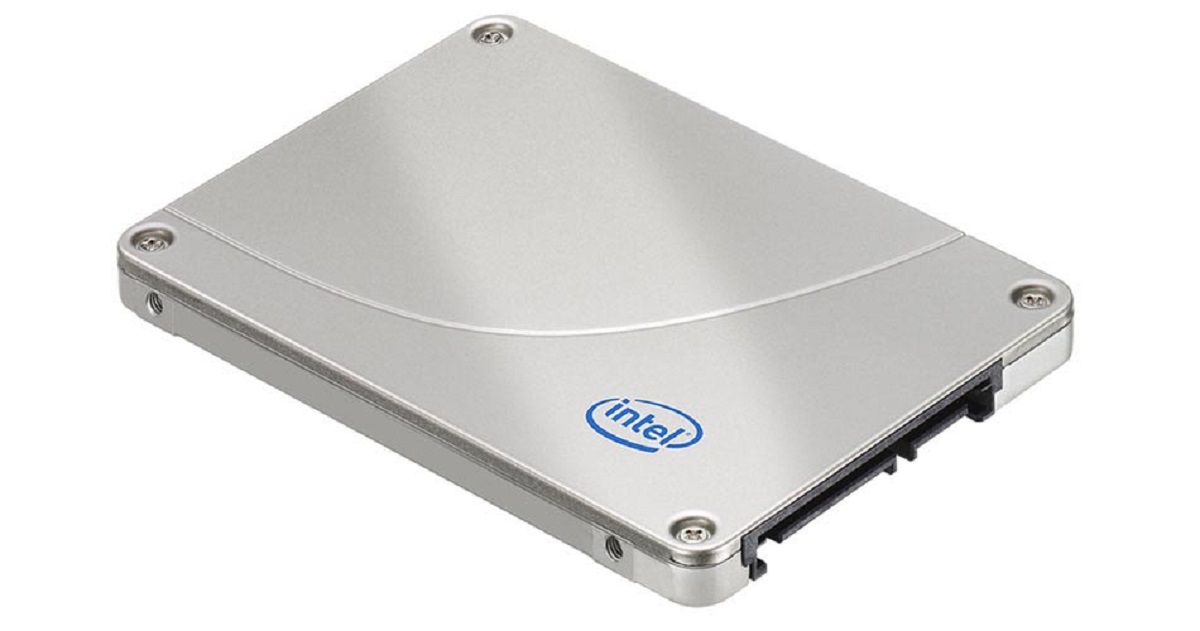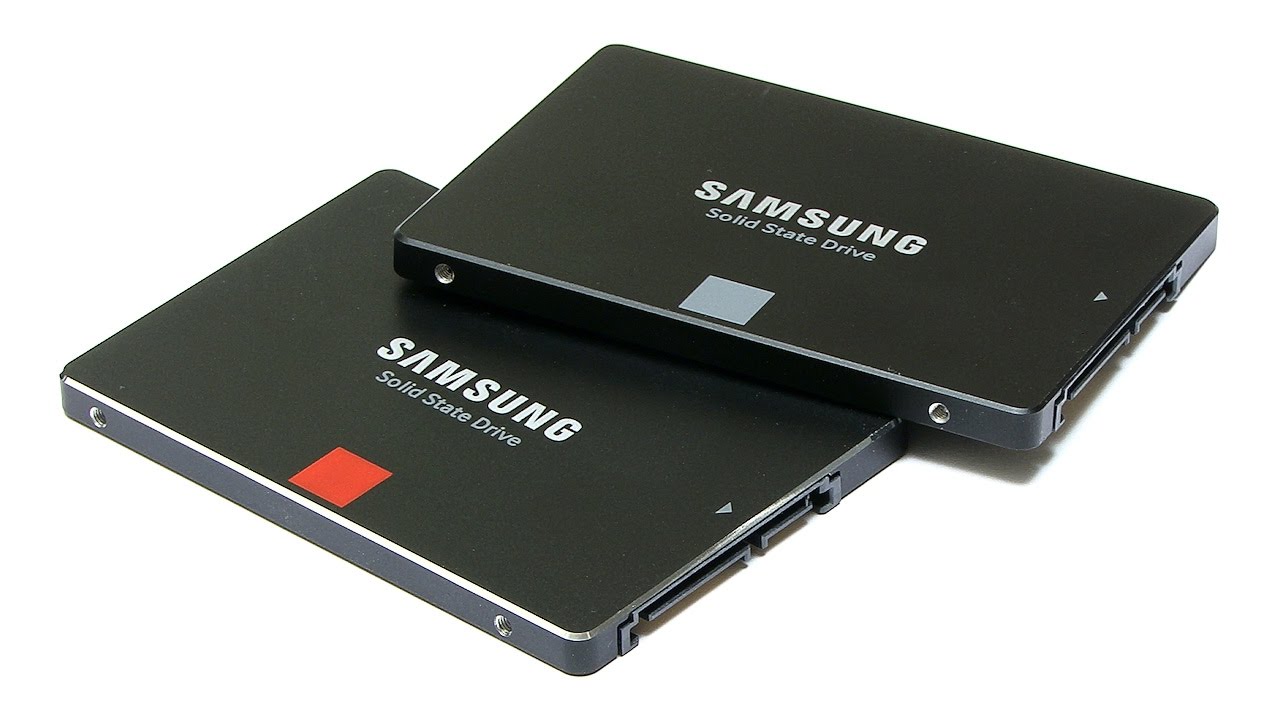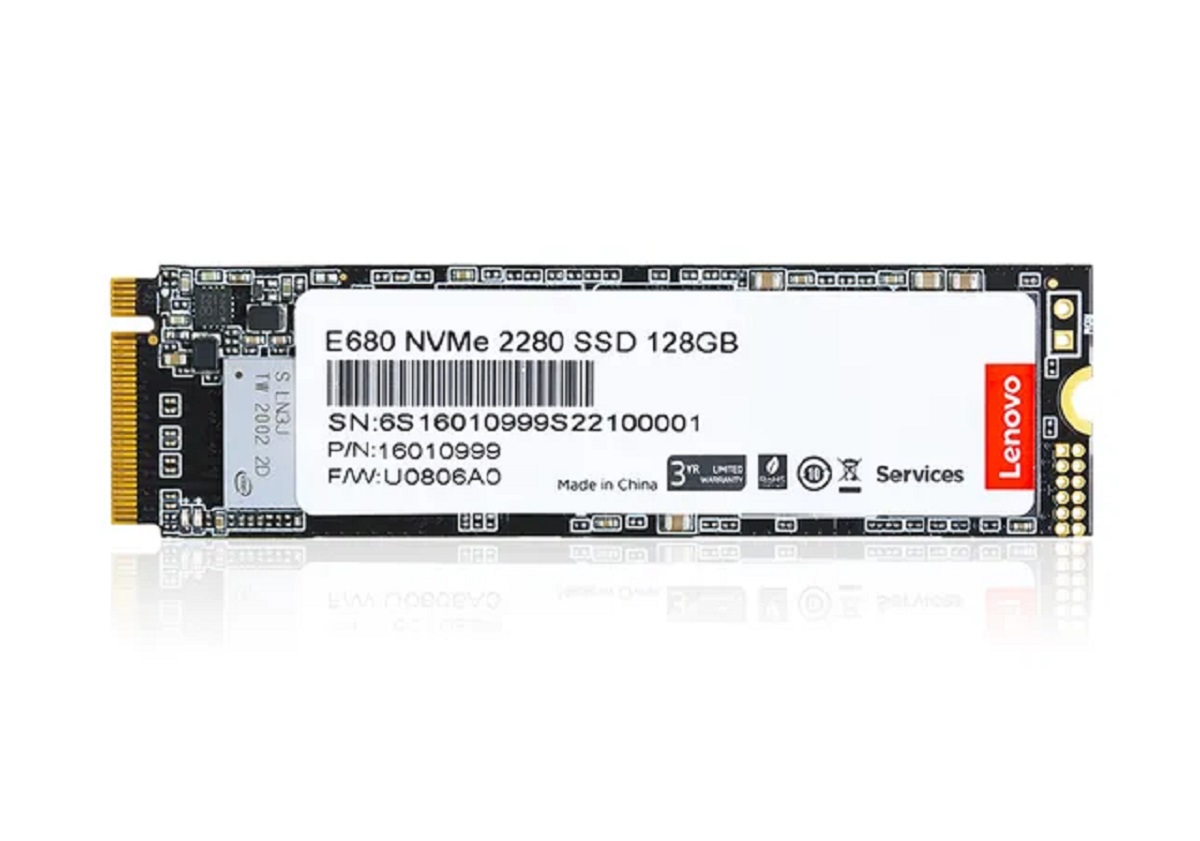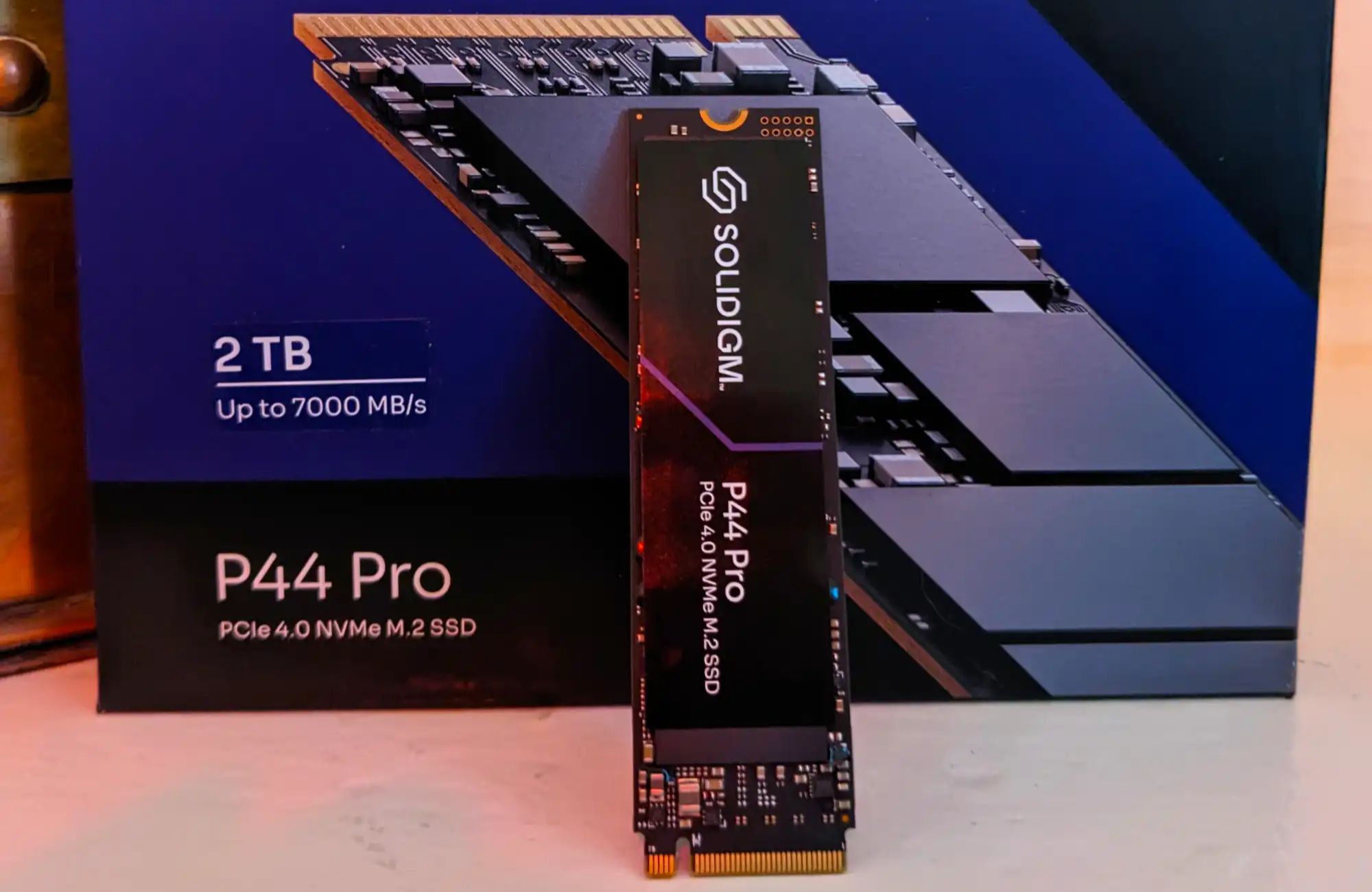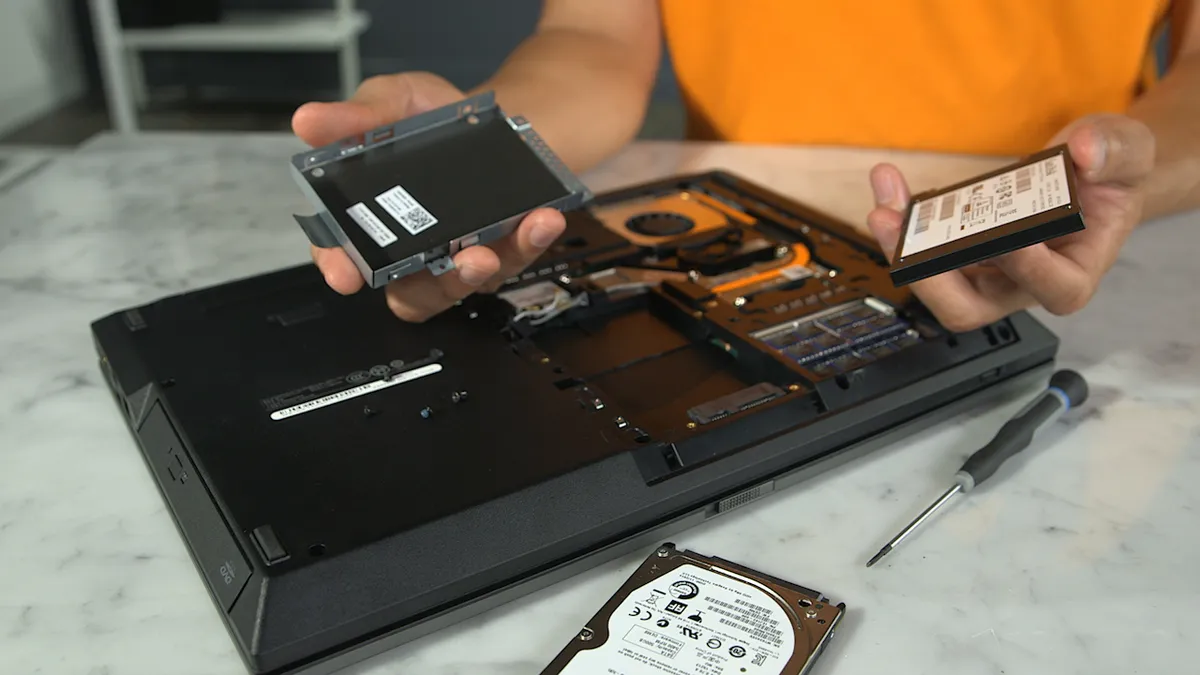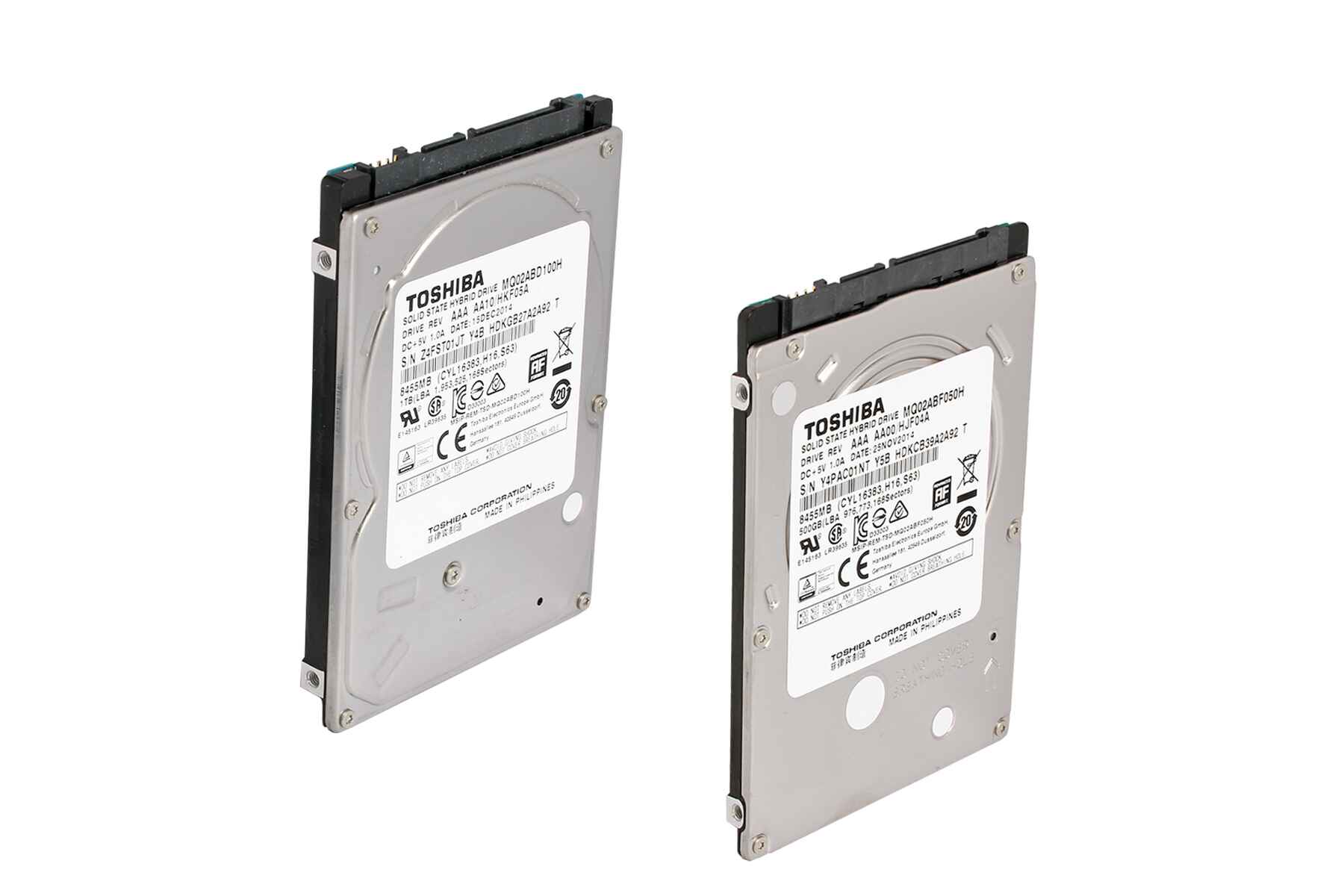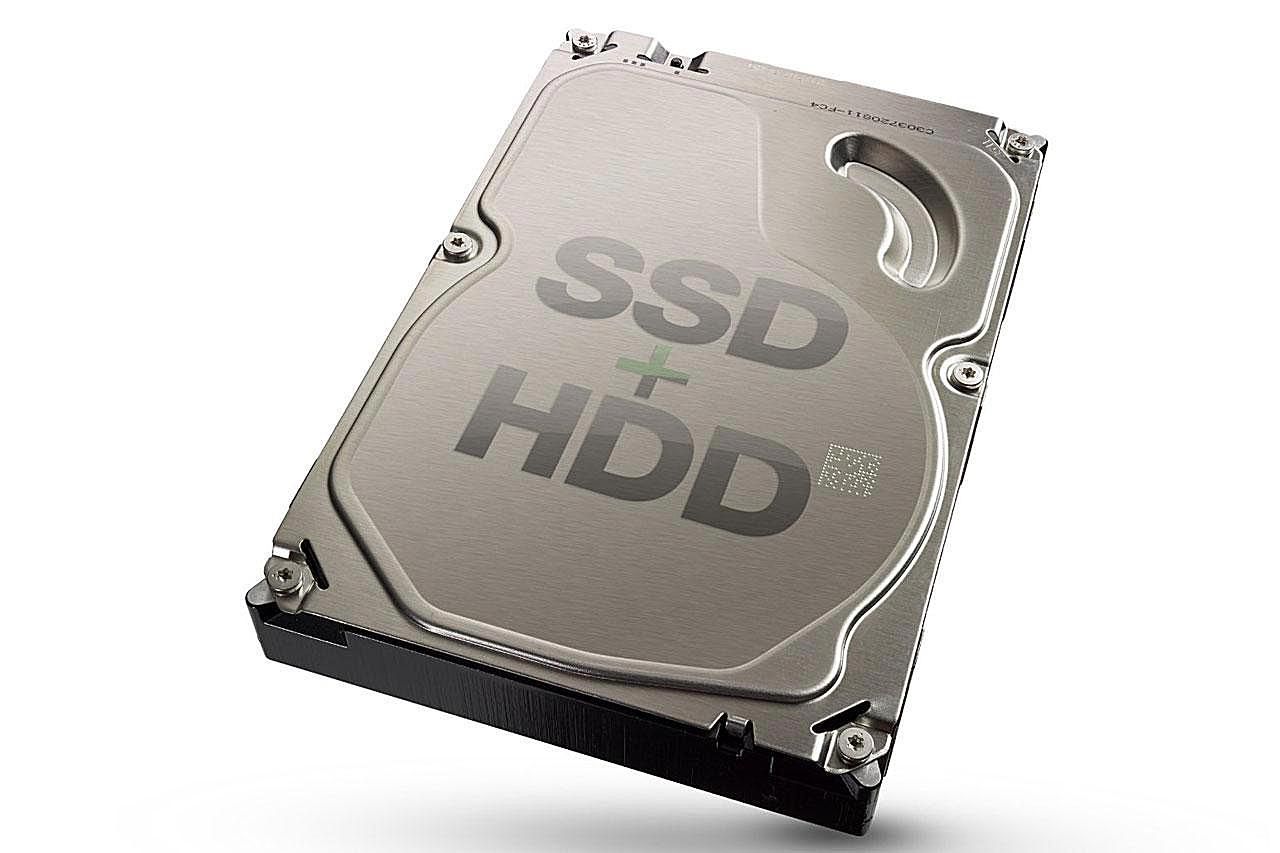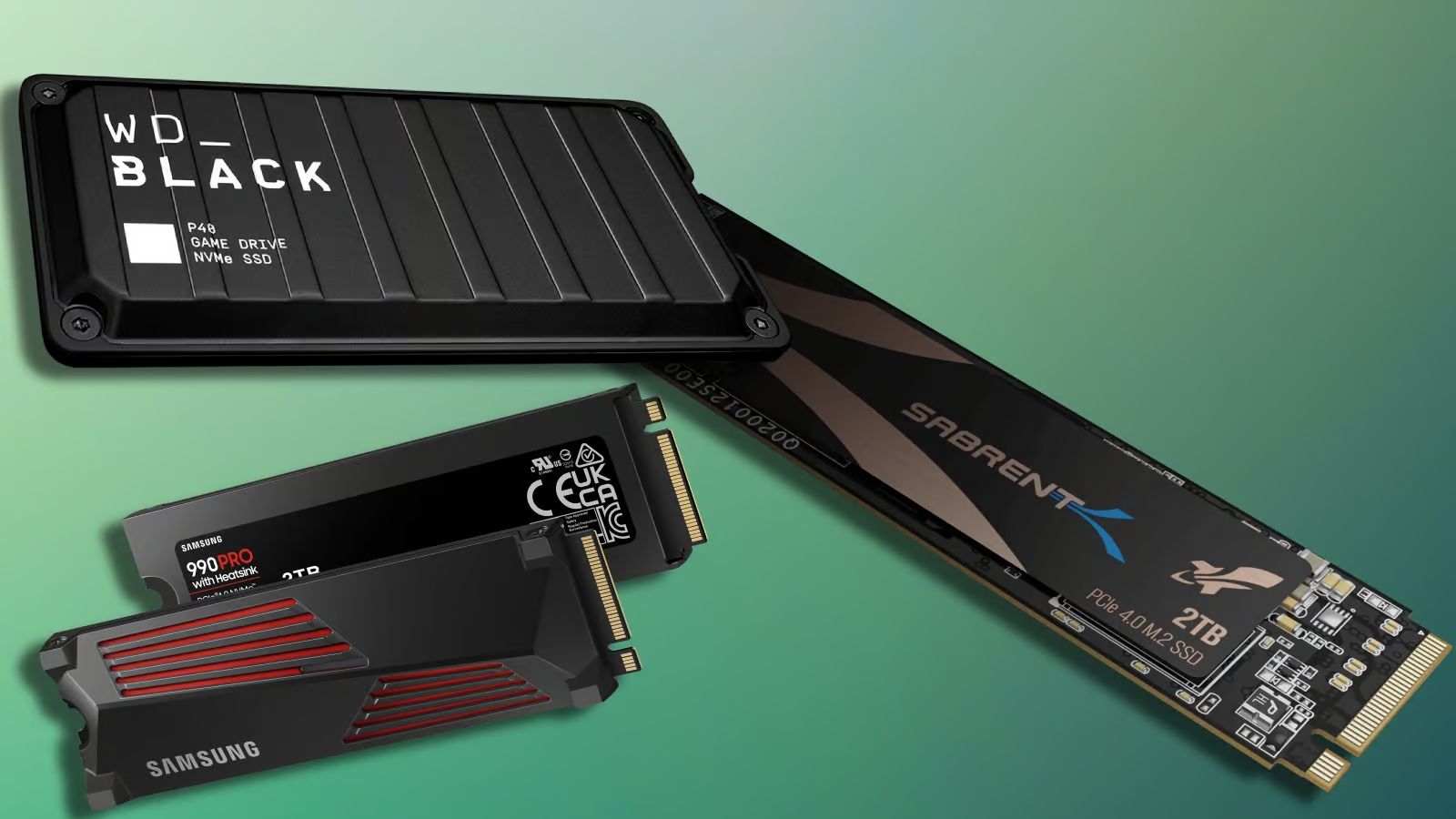Introduction
When it comes to computer storage, the technology has come a long way from the days of bulky hard disk drives (HDDs). One of the most significant advancements in recent years is the introduction of solid state drives (SSDs). With their lightning-fast performance and superior reliability, SSDs have revolutionized the way we store and access data on our computers.
Unlike HDDs, which rely on spinning disks and mechanical read/write heads, SSDs use semiconductor-based memory to store data. This fundamental difference brings a host of benefits, including faster boot times, quicker file transfers, and overall smoother computing experiences.
Whether you’re a tech enthusiast or simply looking to upgrade your computer, it’s essential to understand the ins and outs of solid state drives. In this article, we will explore what exactly a solid state drive is, how it works, the advantages and disadvantages it offers, and how to install one in your computer.
By the end of this article, you will have a comprehensive understanding of solid state drives and be well-equipped to make an informed decision about integrating them into your computing setup.
Definition of a Solid State Drive (SSD)
A solid state drive (SSD) is a type of computer storage device that stores data using solid state flash memory. Unlike traditional hard disk drives (HDDs), which use spinning disks and mechanical read/write heads to access data, SSDs have no moving parts. Instead, they rely on integrated circuits to store and retrieve data quickly and efficiently.
SSDs are constructed using NAND flash memory, a non-volatile form of storage that retains data even when power is disconnected. This allows for faster data access and transfer speeds compared to HDDs. The absence of moving parts in SSDs also makes them more resistant to damage from physical shock and allows for silent operation.
One of the defining features of SSDs is their form factor, which is typically smaller and more compact than HDDs, making them ideal for use in laptops and ultra-thin devices. They are available in various capacities, ranging from a few hundred gigabytes to multiple terabytes, allowing users to choose the size that best fits their needs.
Another notable characteristic of SSDs is their use of solid state memory cells to store data. These memory cells are organized into pages and blocks, with each cell capable of storing multiple bits for higher storage density and efficiency.
SSDs are connected to the computer via interfaces such as SATA (Serial Advanced Technology Attachment), PCIe (Peripheral Component Interconnect Express), or M.2 (Next Generation Form Factor). These interfaces determine the speed at which data can be transferred between the SSD and other computer components.
Overall, solid state drives offer a reliable, high-performance storage solution that is rapidly replacing traditional hard disk drives in many computing applications. Their speed, durability, and compact form factor make them a popular choice for both casual users and professionals seeking improved performance and efficiency for their systems.
How Does a Solid State Drive Work?
Understanding how a solid state drive (SSD) works requires a closer look at its internal components and data storage mechanisms. Unlike traditional hard disk drives (HDDs), which rely on spinning disks and mechanical parts, SSDs use a combination of integrated circuits and flash memory to store and retrieve data.
At the heart of an SSD are NAND flash memory chips. NAND flash memory is a type of non-volatile storage that retains data even when the power is turned off. These memory chips are organized into memory cells, which hold the binary information in the form of electrical charges.
When data is written to an SSD, the controller sends electrical signals to program the memory cells. The binary data is stored by varying the voltage applied to the memory cells, representing 0s and 1s. To read the data, the controller measures the voltage levels and interprets them as the stored binary information.
SSDs are organized into pages and blocks. A page is the smallest writable unit in an SSD and typically holds a few kilobytes of data. Pages are grouped together into blocks, which can consist of multiple pages and can be several megabytes in size. When data needs to be written, modified, or erased, it happens at the block level.
One of the unique features of SSDs is the wear-leveling algorithm. This algorithm helps distribute the write operations across the memory cells to prevent certain cells from wearing out faster than others. This ensures that the data is written evenly and prolongs the lifespan of the SSD.
To access data from an SSD, the computer sends a request to the SSD’s controller. The controller retrieves the data from the appropriate memory cells and sends it back to the computer. The fast access times of SSDs result in significantly reduced read and write times compared to HDDs, leading to improved overall system performance.
In terms of connectivity, SSDs can be connected to the computer using various interfaces such as SATA, PCIe, or M.2. These interfaces determine the speed at which data is transferred between the SSD and the rest of the system. PCIe and M.2 interfaces offer higher speeds compared to SATA, allowing for even faster data transfer rates.
In summary, a solid state drive uses NAND flash memory and integrated circuits to store and retrieve data. The controller manages the operations and access to the memory cells, ensuring efficient data storage and retrieval. The lack of moving parts and the use of flash memory make SSDs faster, more reliable, and more durable than traditional hard disk drives.
Advantages of Using a Solid State Drive
Solid state drives (SSDs) offer numerous advantages over traditional hard disk drives (HDDs), making them a popular choice for both professional and personal computing. Here are some of the key advantages of using an SSD:
- Increased Speed: SSDs are significantly faster than HDDs in terms of both read and write speeds. This results in faster boot times, quicker application launches, and overall snappier system performance. With an SSD, you’ll experience a noticeable improvement in loading times for large files, games, and multimedia content.
- Improved Reliability: Since SSDs have no moving parts, they are more resistant to physical shock and damage. This makes them a reliable choice, particularly for portable devices like laptops, where accidental drops or bumps can occur. Additionally, the absence of moving parts reduces the risk of mechanical failures commonly associated with HDDs.
- Energy Efficiency: SSDs consume less power than HDDs, resulting in improved energy efficiency and extended battery life for laptops and other portable devices. This energy-saving feature is especially beneficial for users who require extended periods of computing without access to a power source.
- No Noise: With no spinning disks or moving read/write heads, SSDs operate silently. This silent operation is a welcomed feature for individuals who prefer a quiet computing environment or work in noise-sensitive environments.
- Compact Form Factor: SSDs are available in various compact form factors, making them ideal for use in small devices with limited space. This allows for sleek and slim designs in ultrabooks, tablets, and other portable devices.
- Resistant to Fragmentation: Unlike HDDs, which can suffer from performance degradation due to data fragmentation, SSDs are not affected by fragmentation. This means that the performance of an SSD remains consistent over time, providing a smooth and reliable computing experience.
These advantages highlight the superiority of SSDs when it comes to speed, reliability, energy efficiency, and overall performance. Whether you’re a gamer, content creator, or professional seeking optimal computing experiences, an SSD can significantly enhance your workflow and productivity, making it a worthwhile investment.
Disadvantages of Using a Solid State Drive
While solid state drives (SSDs) bring numerous advantages to the table, it’s important to consider the potential disadvantages before making a decision. Here are some of the key drawbacks of using an SSD:
- Higher Cost: SSDs are generally more expensive per gigabyte compared to traditional hard disk drives (HDDs). Although the prices have been declining over time, SSDs still command a premium price tag, especially for higher-capacity models. This higher cost may be a limiting factor for budget-conscious individuals or those requiring larger storage capacities.
- Limited Lifespan: While SSDs have made significant improvements in terms of durability and longevity, they still have a limited number of write cycles before they start to degrade. Over time, the performance and lifespan of an SSD may diminish, particularly with extensive writing and re-writing of data. However, for most average users, modern SSDs have more than enough lifespan to meet their needs.
- Capacity Constraints: Although SSDs are available in various capacities, they are generally more limited in terms of maximum storage capacity compared to HDDs. While HDDs can provide multiple terabytes of storage at a more affordable price, SSDs with similar capacities can be considerably more expensive.
- Write Speed Degradation: As an SSD fills up with data, its write performance can decrease. Although modern SSDs have advanced wear-leveling algorithms to mitigate this issue, sustained heavy write loads over an extended period may result in reduced write speeds. However, the impact on everyday tasks is generally minimal for most users.
- Data Recovery Challenges: In the event of an SSD failure or data corruption, data recovery can be more challenging compared to HDDs. Due to the complex nature of SSDs’ internal structures and data management algorithms, specialized techniques and equipment may be required to recover lost data. This can potentially lead to higher data recovery costs compared to traditional HDDs.
While these disadvantages do exist, it is important to note that the overall performance and benefits provided by SSDs outweigh these limitations for many users. SSDs continue to evolve, with improvements in reliability, lifespan, and cost-efficiency. Considering your specific computing needs and budget will help determine whether the advantages of an SSD outweigh the disadvantages for your particular use case.
Comparisons with Traditional Hard Disk Drives (HDD)
When considering storage options, it’s important to compare solid state drives (SSDs) with traditional hard disk drives (HDDs) to determine which one best fits your needs. Here are some key points of comparison between SSDs and HDDs:
- Speed and Performance: One of the most significant advantages of SSDs over HDDs is their speed. SSDs have significantly faster read and write speeds, resulting in quicker boot times, faster file transfers, and overall snappier system performance. HDDs, on the other hand, have comparatively slower speeds due to their mechanical nature.
- Reliability and Durability: SSDs have a clear advantage when it comes to reliability and durability. Since SSDs have no moving parts, they are more resistant to physical shock, making them less prone to mechanical failures. HDDs, with their spinning disks and moving read/write heads, are more susceptible to damage from drops or physical impact.
- Capacity and Cost: HDDs typically offer higher storage capacities at a more affordable price compared to SSDs. If you require large amounts of storage space but have a limited budget, an HDD may be the better option. However, SSD capacities are continually increasing, and the price-per-gigabyte gap between SSDs and HDDs is gradually narrowing.
- Noise and Power Consumption: SSDs operate silently since they lack the spinning disks and moving parts found in HDDs. HDDs, on the other hand, produce noise due to the rotation of their disks and the movement of their read/write heads. Additionally, SSDs consume less power, resulting in improved energy efficiency and extended battery life compared to HDDs.
- Fragmentation and Performance: HDDs can suffer from performance degradation due to data fragmentation. As files are written and deleted over time, the data becomes scattered across the disk, resulting in slower read and write speeds. SSDs are not affected by fragmentation, maintaining consistent performance throughout their lifespan.
- Form Factor and Portability: SSDs are typically much smaller and lighter than HDDs, making them suitable for ultra-thin laptops, tablets, and portable devices with limited space. The compact form factor of SSDs allows for sleek and slim designs, while HDDs are generally larger and bulkier.
Ultimately, the choice between an SSD and an HDD depends on your specific needs and priorities. If speed, reliability, and performance are crucial factors for your usage, an SSD is the recommended choice. However, if you require a larger storage capacity at a more affordable price, an HDD may be more suitable. Assess your requirements carefully to determine which type of drive will best serve your computing needs.
How to Install a Solid State Drive in a Computer
If you’re looking to upgrade your computer with a solid state drive (SSD), the installation process is relatively straightforward. Here are the general steps to follow:
- Gather the Necessary Tools: Before you begin, ensure that you have the necessary tools, including a screwdriver, SATA cable, and mounting bracket (if required).
- Prepare the Computer: Turn off your computer and disconnect the power cable. Open the computer case and locate an available drive bay for the SSD. If adapters or brackets are needed to fit the SSD into the bay, install them according to the manufacturer’s instructions.
- Mount the SSD: Carefully secure the SSD into the drive bay or mounting bracket using screws. Make sure the SSD is firmly in place, as any vibrations or movements can affect its performance.
- Connect the Cables: Locate an available SATA port on the motherboard and connect one end of the SATA cable to the SSD. Connect the other end of the SATA cable to the motherboard’s SATA port. If necessary, connect a SATA power cable from the power supply to the SSD.
- Secure the Cables: Use cable ties or cable management options to secure the SATA cables and prevent them from obstructing other components or impeding airflow.
- Close the Case: Once all the connections are secure, close the computer case and fasten any screws or latches to secure it in place.
- Power on the Computer: Reconnect the power cable and turn on the computer. Enter the BIOS or UEFI settings to ensure that the computer recognizes the new SSD. If necessary, adjust the boot order to prioritize the SSD as the primary boot device.
- Install the Operating System: If the SSD is new or doesn’t have an operating system installed, you will need to install one. This typically involves booting from an installation media (such as a USB drive or DVD) and following the prompts to install the operating system onto the SSD.
- Data Migration (optional): If you are replacing an existing HDD with an SSD but want to retain your files and programs, you can use specialized software to clone the contents of the HDD to the SSD. This ensures a seamless transition with all your data intact.
It’s important to note that the installation process may vary slightly depending on your computer’s make and model. Always refer to the manufacturer’s instructions and guidelines for specific details pertaining to your system.
By following these steps, you’ll be able to successfully install an SSD in your computer and enjoy the benefits of improved speed and performance that SSDs offer.
Tips for Choosing the Right Solid State Drive
Choosing the right solid state drive (SSD) for your needs can greatly enhance your computing experience. Here are some important tips to consider when selecting an SSD:
- Storage Capacity: Determine the storage capacity you require based on your usage. Consider the size of your operating system, applications, games, and other files you plan to store on the SSD. SSDs are available in a range of capacities, so choose one that meets your needs without exceeding your budget.
- Performance: Look for SSDs with high read and write speeds to ensure better overall performance. Pay attention to factors such as random read/write speeds, sequential read/write speeds, and input/output operations per second (IOPS).
- Interface: SSDs connect to your computer through various interfaces, such as SATA, PCIe, or M.2. Ensure that the SSD you choose is compatible with your computer’s interface. If your system supports it, consider opting for a PCIe or NVMe SSD for even faster speeds.
- Reliability and Endurance: Check the endurance rating of the SSD, which indicates how much data can be written to the drive before it may start to degrade. A higher endurance rating generally indicates a longer lifespan. Look for features like error correction technology and power loss protection for improved reliability.
- Brand and Warranty: Stick to reputable brands when choosing an SSD. Well-known brands usually offer more reliable products and better customer support. Additionally, consider the warranty offered by the manufacturer, as a longer warranty period can provide peace of mind and protection in case of any issues.
- Price: Set a budget for your SSD purchase. Compare prices across different brands and models to find the best balance between performance, capacity, and cost. Keep in mind that while SSDs may have a higher upfront cost compared to traditional hard disk drives (HDDs), the benefits they offer can outweigh the price difference.
- Read Reviews: Before making a final decision, read reviews and customer feedback on different SSD models. This can provide insight into real-world performance, reliability, and overall user satisfaction.
- Consider Your Use Case: Consider your specific usage scenario. If you are a gamer, content creator, or professional requiring high-performance and fast data transfer, opt for an SSD with a focus on speed and capacity. If you are using the SSD for basic tasks like web browsing and document editing, a more budget-friendly option could be suitable.
By considering these tips and evaluating your specific needs and budget, you’ll be able to choose an SSD that is best suited to enhance your computing experience and meet your storage requirements.
Conclusion
Solid state drives (SSDs) have revolutionized computer storage with their lightning-fast speed, durability, and exceptional performance. By utilizing semiconductor-based memory, SSDs provide faster boot times, improved data transfer rates, and smoother computing experiences compared to traditional hard disk drives (HDDs).
In this article, we explored the definition of SSDs and how they work. We discussed the advantages of using SSDs, including increased speed, improved reliability, energy efficiency, and silent operation. We also highlighted the potential disadvantages, such as higher cost, limited lifespan, and data recovery challenges.
Furthermore, we examined the comparisons between SSDs and HDDs, considering factors such as speed, reliability, capacity, noise, and power consumption. We also provided step-by-step guidance on how to install an SSD in a computer and offered tips for choosing the right SSD based on storage capacity, performance, interface, reliability, brand, price, and use case.
Whether you’re a tech enthusiast, gamer, content creator, or professional seeking optimal performance and efficiency, upgrading to an SSD can greatly enhance your computing experience. The seamless integration, fast data access, and improved overall system responsiveness make SSDs the ideal choice for those looking to maximize their computing capabilities.
With the continuous advancements in SSD technology and the narrowing price gap between SSDs and HDDs, more and more individuals are opting for the superior performance and reliability offered by SSDs. Evaluate your needs, consider your budget, and make an informed decision when choosing the right SSD for your computing requirements.
Investing in an SSD is a surefire way to future-proof your computer, unlocking the immense potential for speed, efficiency, and heightened productivity in all your computing tasks.







